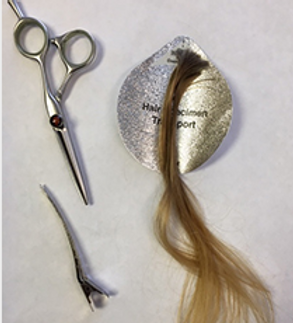Hair Follicle Drug and Alcohol Testing
Hair follicle drug/alcohol testing is a method used to detect the presence of various illicit and prescription drugs and alcohol in an individual's system. Here's a breakdown of what it entails:
Detected Substances
Hair follicle tests can identify a range of substances including:
-
Amphetamine type stimulants (e.g. Speed, Ice and Ecstasy)
-
Benzodiazepines (e.g. Sleeping Tablets and Relaxants)
-
Cannabis (Marijuana and THC)
-
Cocaine
-
Opiates (e.g. Heroin, Codeine and Morphine)
-
Alcohol
Sample Collection
A hair sample of around 200mg is typically collected from the back of the
scalp, near the vertex. If scalp hair is insufficient or too short (less than 1 cm),
beard hair may be used as an alternative. However, this can make it challenging
to determine the time frame covered by the sample.
Benefits
Hair follicle testing offers several advantages:
-
Extended detection window - Hair tests can detect drug use over a longer period (up to 90 days) compared to other methods like urine or saliva testing.
-
Resistance to adulteration - Hair testing is highly resistant to tampering or manipulation of the sample, making it a reliable method for detecting drug or alcohol use.
-
Monitoring long term drug and alcohol use: Hair testing is useful for tracking long term or chronic drug and alcohol use patterns, providing insights into an individual's drug/alcohol habits over an extended period.
-
Reliability in safety critical environments - Hair testing is commonly used in workplaces, family law proceedings, and other safety-critical environments where reliable compliance is crucial.
Limitations
While hair follicle drug/alcohol testing has its benefits, it's essential to acknowledge its limitations:
-
Inability to detect recent drug use - Hair tests may not detect recent drug use within the last week or so, as it takes around 10 - 14 days for drugs to show up in the hair follicle.
-
Limited detection of infrequent drug use - Hair testing may not be sensitive enough to detect sporadic or occasional drug use, especially if the drug concentrations are low or if the hair sample is short.
-
Invasive collection process - While hair collection is generally non-invasive, it still requires the removal of a hair sample, which some individuals may find uncomfortable or objectionable.
Overall, hair drug and alcohol testing is a valuable tool for detecting and monitoring drug/alcohol use, particularly in situations where a comprehensive overview of an individual's drug/alcohol history is necessary. However, it's crucial to consider its limitations and potential applications.
Turn around time for results is usually 2 weeks.

